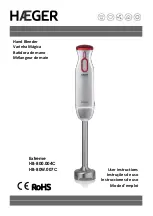
SBOOST II User Guide
6
Version 1.1 June 2015
© Copyright 2015SPROG DCC Ltd
The SPROG II has a lower maximum supply voltage of 15V, compared to the
SBOOST II maximum of 20V. When using an SBOOST II with a supply
voltage greater than 15V special care must be taken. For SBOOST II supply
voltages above 17V, a separate power source, of the correct voltage,
must
be used for the SPROG II. For SBOOST II supply voltages in the range 15
–
17V you can use a separate power supply or insert a string of 3 1N4001 (or
similar) diodes in series with the +V connection to drop the voltage slightly.
Connect the SBOOST II +V output to the SPROG II +V input.
Connect the SBOOST II 0V output to the SPROG II 0 input.
If the track output of the SPROG II is also powering a track power district then
the power supply must be rated at least 3.5 Amps. See “Considerations
When Daisy-
chaining Boosters”, below.
Connection to a SPROG 3
Follow the connection instructions for SPROG II. The SPROG 3 is rated for
the same maximum voltage as the SBOOST II and can always use the same
power supply.
If electrical isolation is required between the layout and SPROG 3 then a
separate, isolated, power supply must be used.
If the track output of the SPROG 3 is also powering a track power district then
the power supply must be rated at least 5 Amps. See “Considerations When
Daisy-
chaining Boosters”, below.
Connection to Other Command Stations
SBOOST II has an opto-isolated DCC input and can be connected to the
DCC output of most DCC command stations and boosters.
Multiple Power Districts Using SBOOST II
If more than one SBOOST II is to be connected between the command
station (e.g. one of the SPROG family) and the layout, to give multiple power
districts, then care must be taken with both the DCC input connections and
the track connections to ensure the same polarity at each SBOOST II.
Connect all of the SBOOST II
“In A” terminals together and connect to one
output of the command station.
Connect all of the SBOOST II
“In B” terminals together and connect to the
other output of the command station.
Connect the “Tr A” and “Tr B” outputs to the layout in a consistent manner in
































